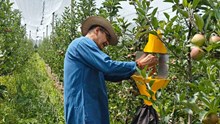
Fertilizers play a pivotal role in ensuring agricultural productivity and food security in India, a country where over 50% of the population relies on agriculture for livelihood. The Department of Fertilizers (DoF), under the Ministry of Chemicals and Fertilizers, is entrusted with the critical responsibility of ensuring timely and adequate availability of fertilizers across all States and Union Territories.
This becomes especially crucial before the start of each cropping season when the Department of Agriculture and Farmers Welfare (DA&FW) conducts a comprehensive assessment of State-wise fertilizer requirements. Based on this assessment, the DoF formulates and releases a monthly supply plan that is State-wise and Company-wise to ensure smooth delivery and distribution of fertilizers across the country.
Over the past decade, India’s fertilizer sector has undergone a significant transformation driven by policy reforms, ramped-up domestic production, and carefully crafted international partnerships. These collective efforts have laid a strong foundation for achieving Atmanirbharta (self-reliance) in the fertilizer sector- an essential goal for a nation heavily dependent on imports in the past.
Domestic Production: A Decade of Steady Growth
India’s domestic production of fertilizers has seen commendable growth over the last ten years. Urea production rose from 227.15 Lakh Metric Tonnes (LMT) in 2013-14 to an impressive 306.67 LMT in 2024-25, marking a growth of around 35%. Likewise, the combined production of Di-Ammonium Phosphate (DAP) and complex fertilizers like NPKS has surged from 110.09 LMT to 158.78 LMT during the same period- a 44% increase. This growth clearly reflects the Government's proactive push towards reducing import dependence and boosting indigenous manufacturing capacities.
Global Disruptions and India’s Strategic Response
The global fertilizer supply chain has been severely disrupted in recent years due to complex geopolitical issues. The ongoing Red Sea crisis has forced vessels to re-route via the Cape of Good Hope, adding over 6,500 km and increasing shipment time and cost, especially for phosphate-based fertilizers like DAP. Moreover, the Russia-Ukraine war and the Israel-Iran conflict have driven fertilizer prices up in the international market, posing a risk to timely imports.
Despite these challenges, the Government of India has shown exceptional agility and foresight. Strategic diplomatic engagements and long-term procurement agreements have ensured that farmers in India continue to receive fertilizers without any disruption. A significant achievement has been the arrangement for 25 LMT of DAP and TSP with Morocco, secured through a consortium of Indian fertilizer companies.
Furthermore, in July 2025, a major Long-Term Agreement (LTA) was signed between Indian companies and Saudi Arabia for the annual supply of 31 LMT of DAP for five years, beginning from the 2025-26 agricultural year.
Comfortable Availability During Kharif 2025
As a result of these proactive measures, fertilizer availability across States has remained more than adequate during the ongoing Kharif 2025 season. Against a pro-rata requirement of 143 LMT of Urea, a robust availability of 183 LMT has been ensured, with 155 LMT already sold.
For DAP, 49 LMT is available against a requirement of 45 LMT, and 33 LMT has been sold. In the case of NPKs, the availability has been significantly ramped up to 97 LMT, far exceeding the pro-rata requirement of 58 LMT, with 64.5 LMT already sold.
Notably, Urea sales have increased by over 13 LMT compared to the same period last year, yet uninterrupted supply has been maintained- due to maximized domestic production and global sourcing via tenders.
Shielding Farmers from Global Price Surge
One of the most commendable actions of the Government has been its strong financial support to insulate farmers from global price fluctuations. The Government continues to provide Urea at a statutorily fixed MRP of Rs 242 per 45 kg bag (excluding neem coating and taxes).
Similarly, DAP is made available to farmers at Rs 1,350 per bag, despite international price volatility. This is made possible through special subsidy packages that include cost reimbursements, GST reimbursement, and provisions to cover any international price hikes.
Coordinated Action Against Malpractices
To ensure that fertilizers reach genuine farmers at fair prices, the DoF maintains close coordination with State Governments, Port Authorities, Indian Railways, and fertilizer companies. Stringent enforcement is being carried out to prevent black marketing, hoarding, overpricing, and diversion of fertilizers.
Since April 2025, nearly 2 lakh inspections and raids have been conducted across the country. These have led to 7,927 show-cause notices, cancellation/suspension of 3,623 licenses, and registration of 311 FIRs under the Essential Commodities (EC) Act.
Conclusion
India’s fertilizer sector stands at a strong juncture, bolstered by increased domestic capacity, strategic international alliances, and robust governance mechanisms. Amidst global disruptions, India has successfully safeguarded its agricultural backbone by ensuring uninterrupted and affordable fertilizer availability. The Government's commitment to empowering farmers, enhancing food security, and progressing toward self-reliance in fertilizer production continues to yield tangible outcomes that resonate across the fields of the nation.















